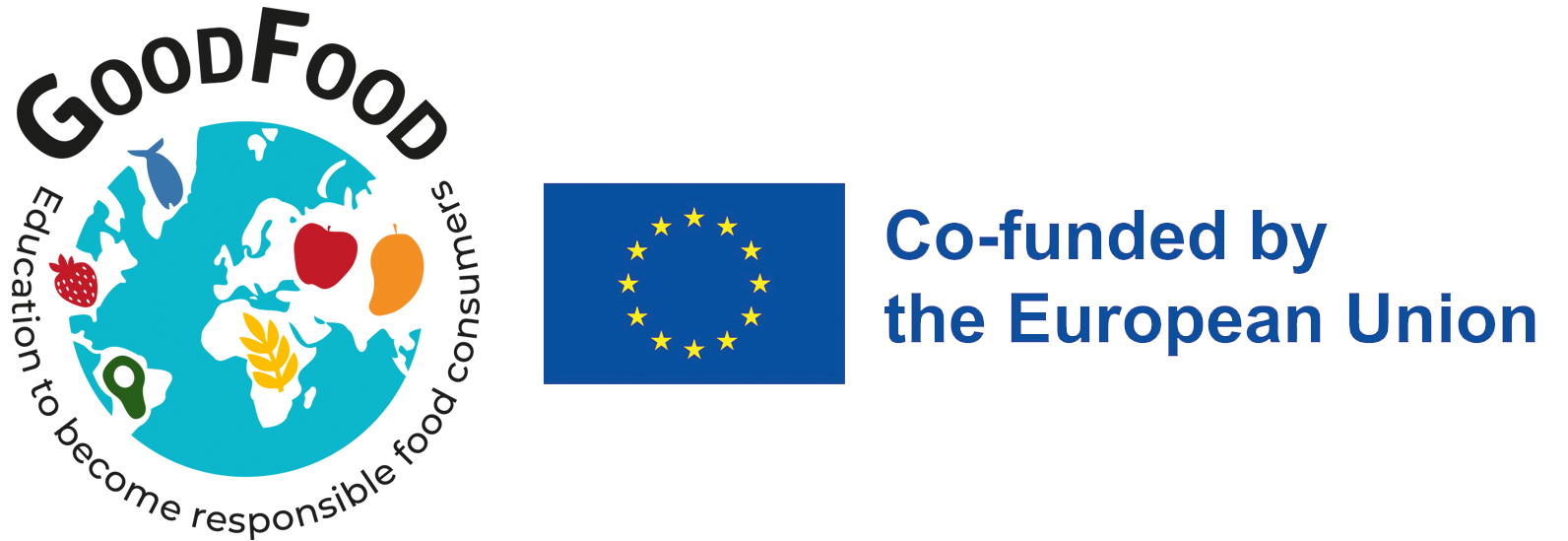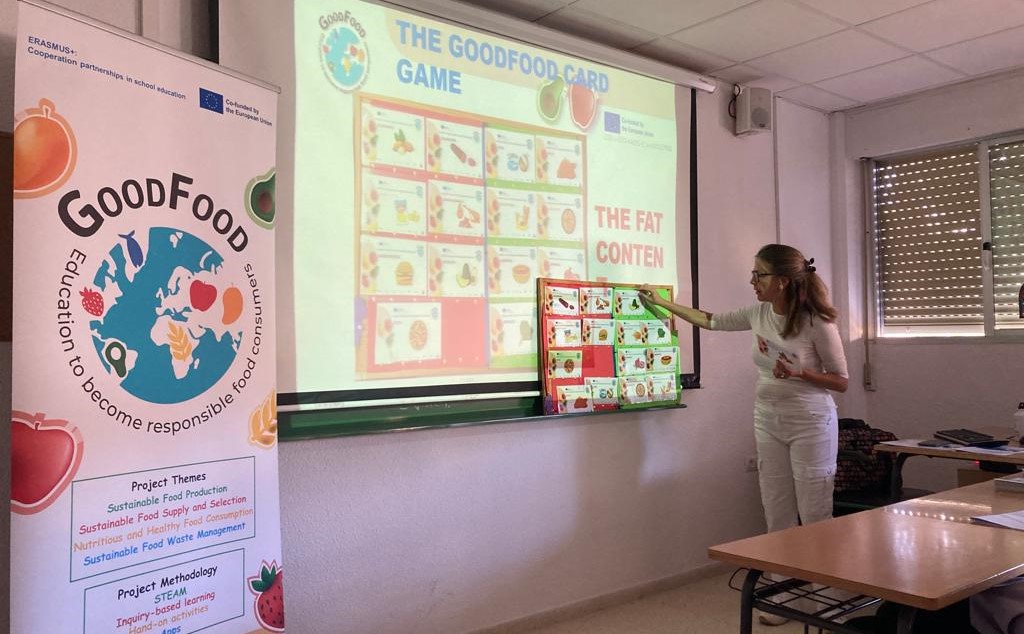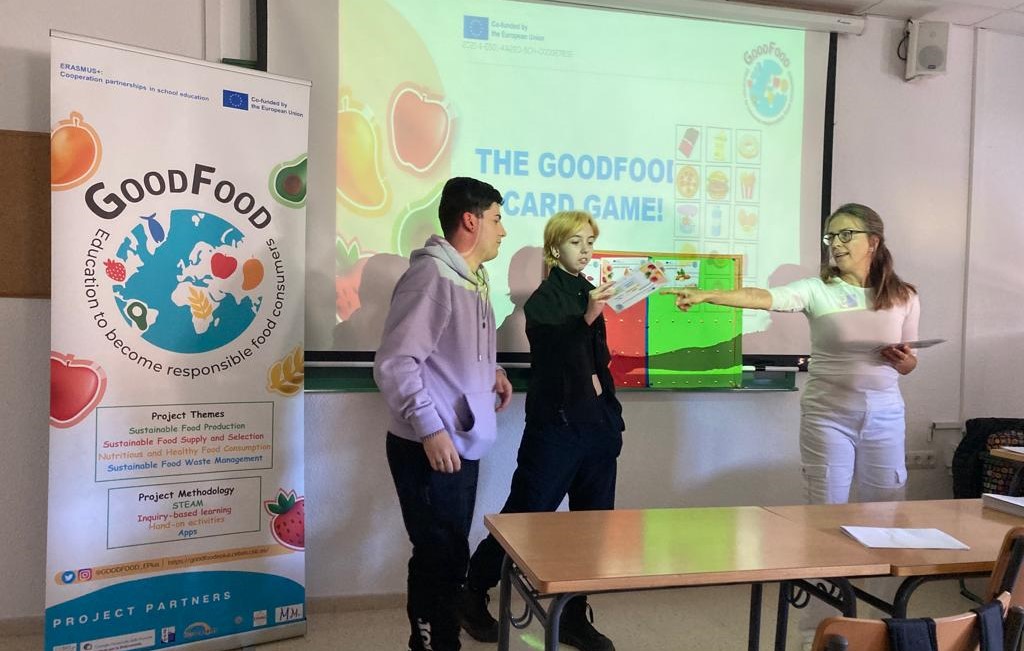The GOODFOOD card game
The GOODFOOD card game
GOODFOOD has developed a series of cards with a selection of foods representative of some of the main groups of food (meat, fish, cereals, vegetables, fruits, legumes, etc.) as well as their corresponding average data for fat, salt, and sugar content (nutrients) and CO2 equivalents (eCO2; sustainability). The cards can be printed out on a two-sided page (each product with its corresponding composition on the back) and used to implement several exercises (games). Like so, the students can order these cards as follows:
1) Higher to lower fat content.
2) Higher to lower salt content.
3) Higher to lower sugar content.
4) Higher to lower eCO2 production.
5) Select several ingredients to design a healthy and sustainable dish or menu.
After the food sorting games, the students can check the results by turning the cards over and find out how many they have ordered correctly. These exercises will motivate and entertain the students as well as help them to learn more and understand:
– Some of the nutritional differences between different foods that are important to consider in relation to our health: for example, choosing foods with less fat, less salt and lower sugar content.
– The differences in sustainability between different foods to learn how to choose those foods whose production emits less CO2 into the atmosphere.
– The complexity of knowing the nutritional composition and selecting a healthier and more sustainable food: for example, almonds are a product with a high fat content, higher than French fries (50.0 versus 35.0 g/100 g), however, the fat in almonds is healthier and they also contain much less salt than the fries (<0.1 vs. 1.6 g/100 g). In addition, almond production is also more sustainable than the production of French fries (emission of 286 versus 382 g eCO2/100 g).
The exercises can be done by the students without any help or additional information to see what they know or remember by their own, but can also be done by providing them with some of the easily accessible digital tools from internet to search for the necessary information and data to help them ordering the food. In this modality, the game will motivate them to investigate those available tools to know the nutritional composition and sustainability of the foods they normally eat.





